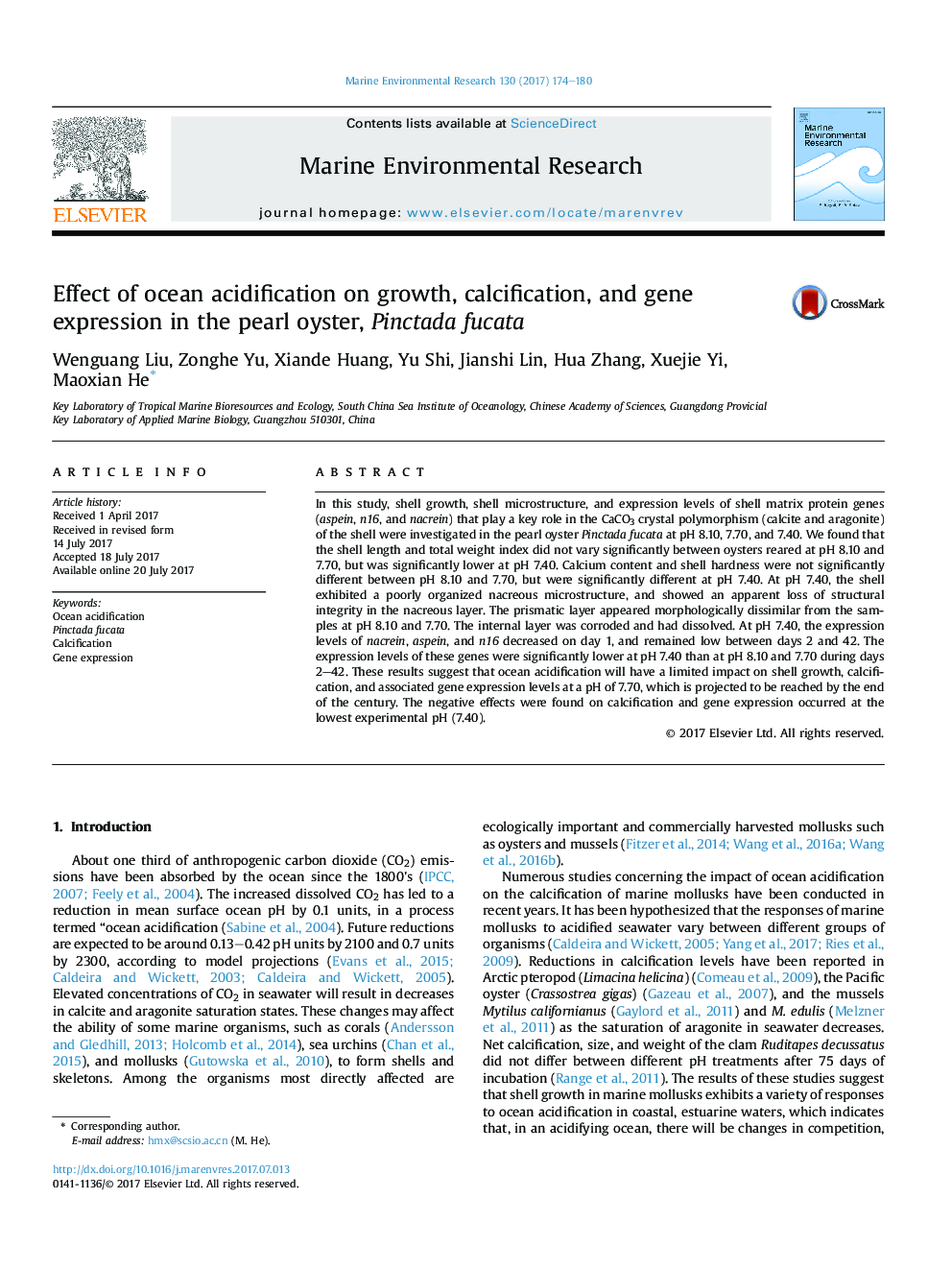| Article ID | Journal | Published Year | Pages | File Type |
|---|---|---|---|---|
| 5766156 | Marine Environmental Research | 2017 | 7 Pages |
â¢The shell length and total weight index were significantly lower at pH 7.40.â¢Calcium content and shell hardness were significantly different at pH 7.40.â¢At pH 7.40, the shell exhibited a poorly organized nacreous microstructure.â¢The prismatic layer was corroded and had dissolved at pH 7.40.
In this study, shell growth, shell microstructure, and expression levels of shell matrix protein genes (aspein, n16, and nacrein) that play a key role in the CaCO3 crystal polymorphism (calcite and aragonite) of the shell were investigated in the pearl oyster Pinctada fucata at pH 8.10, 7.70, and 7.40. We found that the shell length and total weight index did not vary significantly between oysters reared at pH 8.10 and 7.70, but was significantly lower at pH 7.40. Calcium content and shell hardness were not significantly different between pH 8.10 and 7.70, but were significantly different at pH 7.40. At pH 7.40, the shell exhibited a poorly organized nacreous microstructure, and showed an apparent loss of structural integrity in the nacreous layer. The prismatic layer appeared morphologically dissimilar from the samples at pH 8.10 and 7.70. The internal layer was corroded and had dissolved. At pH 7.40, the expression levels of nacrein, aspein, and n16 decreased on day 1, and remained low between days 2 and 42. The expression levels of these genes were significantly lower at pH 7.40 than at pH 8.10 and 7.70 during days 2-42. These results suggest that ocean acidification will have a limited impact on shell growth, calcification, and associated gene expression levels at a pH of 7.70, which is projected to be reached by the end of the century. The negative effects were found on calcification and gene expression occurred at the lowest experimental pH (7.40).
